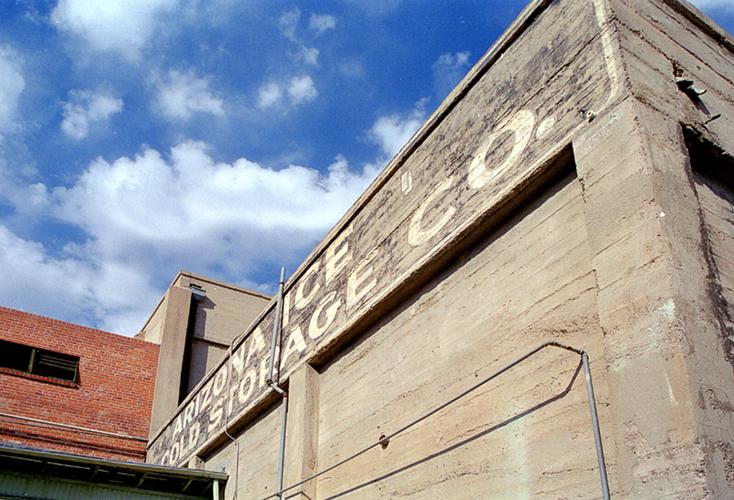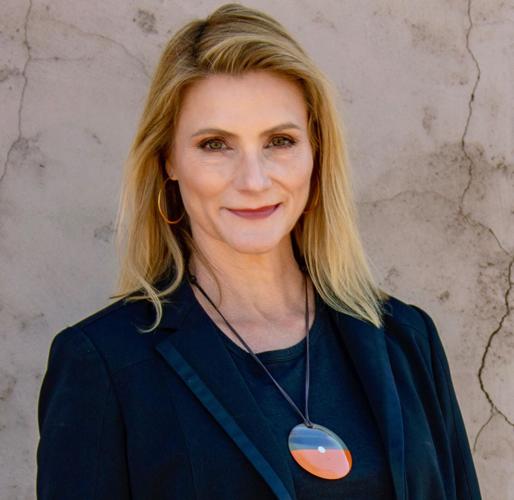When Randi Dorman arrived in Tucson in 2001, downtown was a shadow of its former self.
Boarded-up buildings lined empty streets where families once strolled on Saturday shopping trips. The vibrant heart that had beaten strong until the 1970s had flatlined, a victim of suburban sprawl and the mall boom that hollowed out American downtowns from coast to coast.

Dorman
But Dorman saw something many others didnãt.
ãThere were good bones,ã she recalls, ãbut it needed a lot of work.ã Where most people saw decay, she spotted original brick walls, vintage windows and hardwood floors waiting to tell new stories.
From Manhattan to the desert
Dorman came to Tucson with an unusual pedigree.
Sheãd worked for Interbrand, one of the worldãs largest marketing and branding firms, and lived in the heart of Lower Manhattan ã the quintessential American downtown.
People are also reading…

The dilapidated former home of Arizona Ice and Cold Storage Company near downtown Tucson was converted into the Ice House Lofts, Arizona's first successful loft conversion project.
When she met Rob Paulus, who wouldô become her husband, she began splitting time between New Yorkãs energy and Tucsonãs potential.
The contrast was striking, but the possibilities were irresistible.
She didnãt arrive as an observer. Dorman became a downtown evangelist, a passionate advocate who converts vision into action.
Within months, Rob and their friend Warren discovered a dilapidated ice factory building that seemed to whisper its potential. When Rob thought it could be converted into incredible lofts, the New Yorker intrinsically understood the vision and its potential.
So she helped make it happen.
The Ice House gamble
With four partners and a three-year timeline, Dorman embarked on a risky venture in a city with little appetite for change. The Ice House Lofts became Arizonaãs first successful loft conversion project ã a foundational achievement that proved downtown living could work and paved the way for the conversions that followed.
It was the first domino, and Dorman kept pushing.
She joined the board of Tucsonãs Museum of Contemporary Art (MOCA), eventually serving as president for six years and guiding the museumãs move to a 25,000-square-foot former firehouse.
She is the former chairwoman of the Downtown Tucson Partnership and remains active on the executive committee. Her passion for Tucson, especially downtown, even led her to run for mayor.
A movement, not a solo act
Dormanãs leadership style reflects her philosophy: one person can spark change, but lasting transformation requires a committed team. Sheãs quick to credit the constellation of players revitalizing downtown.
Fletcher McCusker and Rio Nuevo. The Oserans and Hotel Congress and The Century Room. Herb Stratfordãs vision for The Fox Theatre. The Flores family and the El Charro concepts. And so many more.
ãNever underestimate the power of an individual or small group of people and the changes they can bring about,ã Dorman told me.
What downtown Tucson offers today
More than two decades after Dorman arrived, downtown Tucson is still evolving ã and thriving.
The architecture remains genuinely authentic, blending cowboy-era character with sleek 21st-century design. Youãll find some of Southern Arizonaãs best housing, entertainment and dining. And thereãs more on the horizon.
The transformation isnãt complete ã it may never be. But thatãs part of downtownãs appeal.
Downtown is a living, breathing neighborhood that honors its past while writing new chapters.
Advocates like Randi Dorman are passionate for a reason.
Downtown Tucson now offers virtually everything urbanites crave: walkability, culture, community and authenticity.
As Petula Clark sang nearly 60 years ago ã and as Dorman has proven through action ã things really are great when youãre downtown.
So donãt wait another minute. Go see for yourself.









